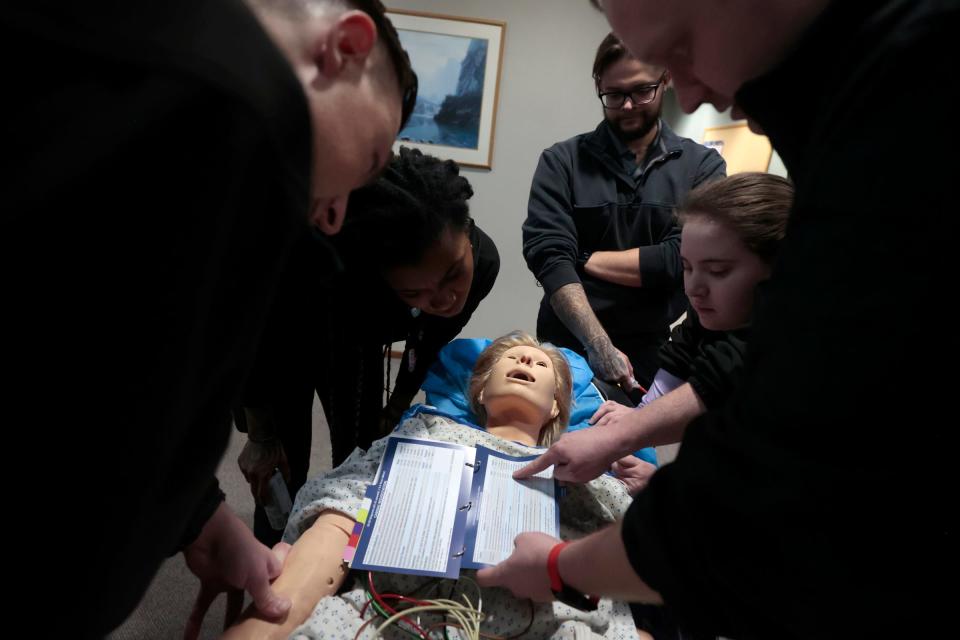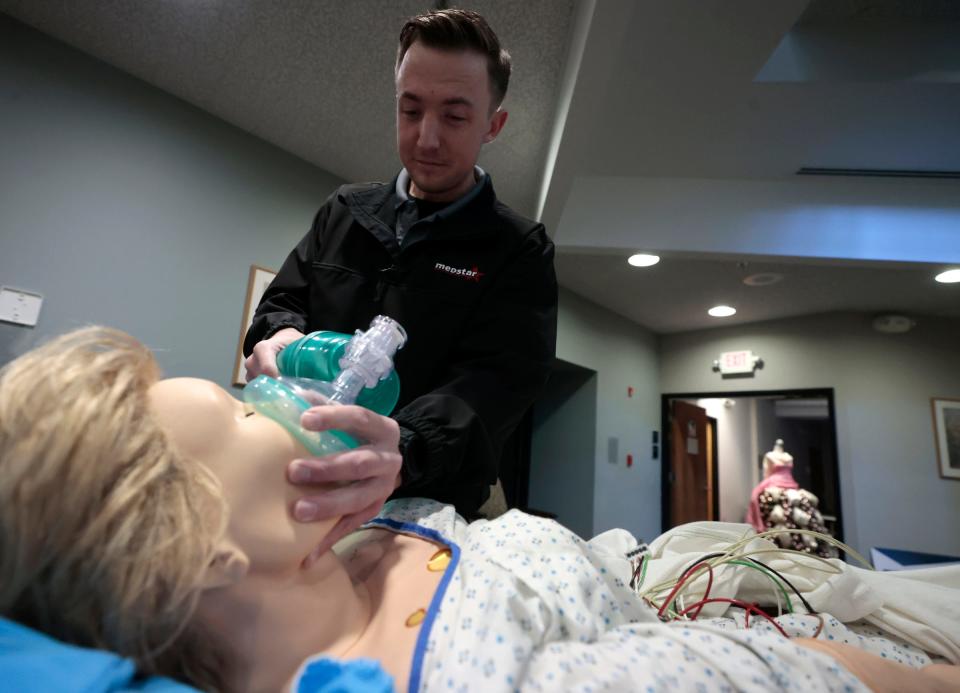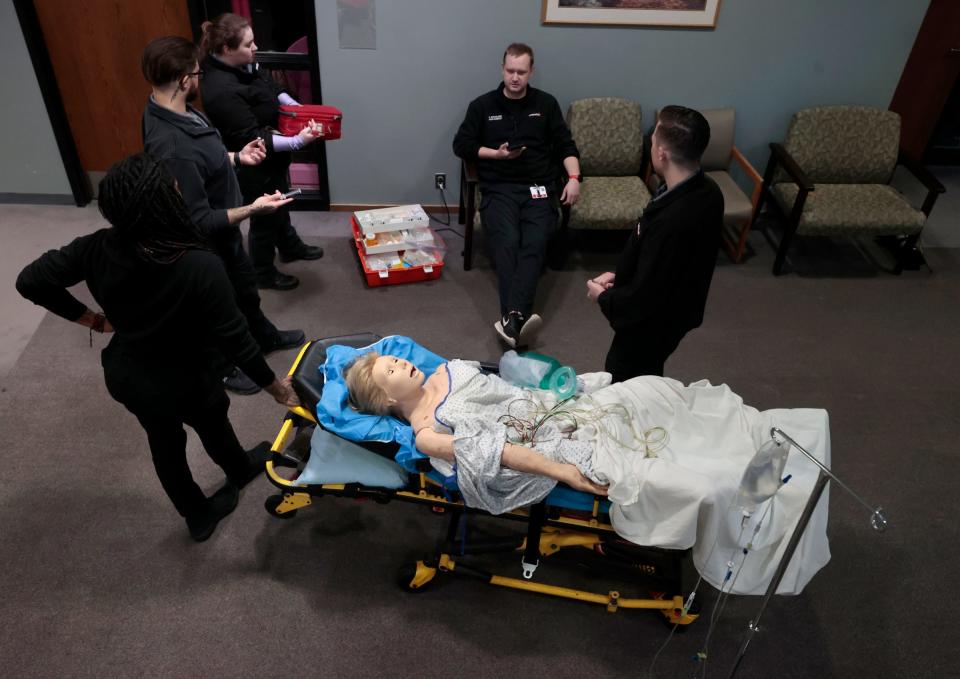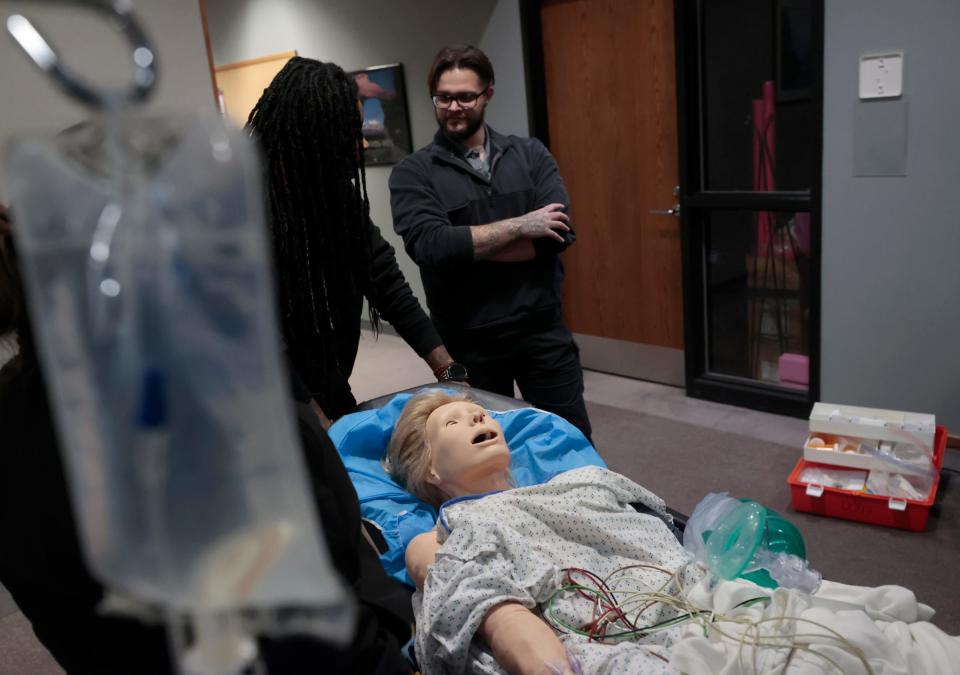First responders scramble to combat paramedic shortage
Ryan Rivard said he was about halfway through his nursing studies when he decided that the field wasn’t for him.
“Being a paramedic, it’s not going to pay as much as the nursing jobs I could have had, but I’m going to like what I’m doing and I’ll still make a comfortable living,” he said.
For about two years now, Rivard, 30, of Clinton Township, has been an emergency medical technician for Medstar Ambulance. He’s enrolled in the company’s paramedic academy and next spring he expects to earn his paramedic license.

Communities across the state and around the country are eager to find more people like Rivard to build a new generation of first responders to replace an aging workforce. They have boosted recruiting efforts and pay to address the shortage, which is not new.
“It’s a significant problem. I would say this started a good 15-20 years ago,” said Jerald James, who retired from the Detroit Fire Department’s EMS service in 2016 and now works as associate executive director of the Michigan Association of Firefighters. “It just has not rebounded I don't know if it will rebound.”
James said finding quality people to serve as first responders is a growing challenge.
“I don't want to say crisis point, but we are getting close to that point, I think with the fire service and the EMTs and paramedics,” he said. “What it means in the long run is that response times are going to be delayed. You're gonna get an older firefighter, an older EMT and older police officer showing up.”
Figures from the Michigan Department of Health and Human Services, which licenses emergency medical personnel, show the number of license holders has actually increased slightly in recent years, but that doesn’t necessarily mean they are all still working in the field. Licenses are good for three years.

The Michigan Association of Ambulance Services, a trade association with members that provide about 75% of medical transports in the state, estimates there are at least 1,000 openings, split evenly between EMTs and paramedics.
Angela Madden, the group’s executive director, said Michigan has four levels of licensing for emergency medical service.
Medical first responders are trained in first aid as well as CPR and the administering of Epipens to people experiencing allergic reactions. The next level are emergency medical technicians who do all those things, plus some additional medications. Above that is a license known as EMT specialist, which Madden said is sort of halfway between an EMT and a paramedic.
Paramedics are the highest level. They have more authority to provide medications and do more advance procedures like intubate a patient who has a blocked airway.

Madden said Covid made the shortage worse.
“There were a number of people that became completely and utterly burnt out or left the industry altogether,” she said. “The idea of bringing something as potentially deadly as COVID-19 home to their families, you name it ... threw a wrench in the entire health care continuum, not just EMS,”
She said a lot of EMT training was shut down during COVID-19 as well, making it more difficult to fill the slots left open by people who retired or quit.
“There was always a level of attrition but at the same time, we were continuously educating more paramedics,” she said. “Over time, we started losing more than we were gaining.”
James said economics are a factor in the shortage, including the cost of training.
“I took a paramedic class in 1996 and it was $1,200,” James said. “Today, that class is closer to $10,000.”
Many EMTs start at about $15-16 an hour, he said.
“A lot of our younger guys are realizing I can kind of make that money somewhere else with less of the expectation,” he said.
Changes to public pensions in recent decades also have hurt, James said. Fire departments used to offer pensions, which was an incentive for people to stay for years. Now, they are offered a 401(k)-style retirement benefit, which they can take with them if they leave after a few years.
“It went from being a career to just a job and now that it's just the job, that's how our younger generation is treating it,” James said. “Even some of our career firefighters are having problems with their own kids becoming firefighters.”

Madden said her group did a salary survey before COVID-19 and it showed a lot of EMTs were making $30,000 to $35,000 a year while the paramedics were in the $50,000-$55,000 range. Those numbers have certainly gone up as agencies try to attract more people, she said.
The state recognizes the problem and has appropriated more than $30 million in recent years to help boost recruitment. Agencies can receive grants to cover tuition for EMTs and paramedics and even pay some people while they learn.
Veterans are often good candidates because they are familiar with public service and many of them have some medical training, Madden said.
Medstar teaches people to become both EMTs and paramedics. The courses are different, but the two instructors, Patricia Daugherty and Tyler Zajac, work closely together to make sure all the bases are covered.
“I would say that we welcome anybody, honestly,” said Jennifer Monaghan, education manager at Medstar. “It's nice if they have a medical background. That's great, but they don't have to.”
Candidates must become EMTs before they can become paramedics. The company’s course to train EMTs is about eight weeks, and the paramedic course takes a little over a year.
Rivad said he enjoys his job. It does involve working weekends and holidays, but he said MedStar tries to make it easier for employees.
“If we work the one holiday the year prior, we don't have to work that holiday the following year,” he said. “It's fair across the board.”
Autumn Anderson, 23, of Roseville, is a fellow EMT and Rivard’s classmate. She likes the work as well.

“I’d say the most satisfying thing would probably be knowing that I did the proper thing ... going through protocols and still helping people out that that is the most satisfying,” she said.
Anderson studied psychology in college and was looking for a job when she graduated. She went through the EMT academy and came to enjoy the work.
Monaghan said the work does involve critical care delivered under emergency conditions, but that’s not the majority of it. A lot of it involves transporting people from one place to another.
“It really takes just being a good, kind, compassionate, empathetic person to take care of other people,” she said. “It's not all lights and sirens. Sometimes, it’s holding onto grandma’s hand in the back of the rig when, you know she's just found out she can't go home. Now she has to go to a nursing home. Our team of providers really excels at that.”
This article originally appeared on Detroit Free Press: Shortage of EMTs and paramedics reaching critical stage.

